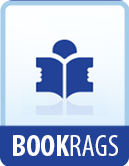c. House Report: Additional Excerpts
================================================
================= Under the heading “Reproduction and uses for other purposes,” the House Report, at pages 72-74, parallels much of the material appearing at pages 65-67 of the Senate Report under the same heading, but with some differences. ========================
=========================================
The concentrated attention given the fair use provision in the context of classroom teaching activities should not obscure its application in other areas. It must be emphasized again that the same general standards of fair use are applicable to all kinds of uses of copyrighted material, although the relative weight to be given them will differ from case to case.
* * *
A problem of particular urgency is that of preserving for posterity prints of motion pictures made before 1942. Aside from the deplorable fact that in a great many cases the only existing copy of a film has been deliberately destroyed, those that remain are in immediate danger of disintegration; they were printed on film stock with a nitrate base that will inevitably decompose in time. The efforts of the Library of Congress, the American Film Institute, and other organizations to rescue and preserve this irreplaceable contribution to our cultural life are to be applauded, and the making of duplicate copies for purposes of archival preservation certanly falls within the scope of “fair use.”
* * *
During the consideration of the revision bill in the 94th Congress it was proposed that independent newsletters, as distinguished from house organs and publicity or advertising publications, be given separate treatment. It is argued that newsletters are particularly vulnerable to mass photocopying, and that most newsletters have fairly modest circulations. Whether the copying of portions of a newsletter is an act of infringement or a fair use will necessarily turn on the facts of the individual case. However, as a general principle, it seems clear that the scope of the fair use doctrine should be considerably narrower in the case of newsletters than in that of either mass-circulation periodicals or scientific journals. The commercial nature of the user is a significant factor in such cases: Copying by a profit-making user of even a small portion of a newsletter may have a significant impact on the commercial market for the work.
The Committee has examined the use of excerpts from copyrighted works in the art work of calligraphers. The committee believes that a single copy reproduction of an excerpt from a copyrighted work by a calligrapher for a single client does not represent an infringement of copyright. Likewise, a single reproduction of excerpts from a copyrighted work by a student calligrapher or teacher in a learning situation would be a fair use of the copyrighted work.




